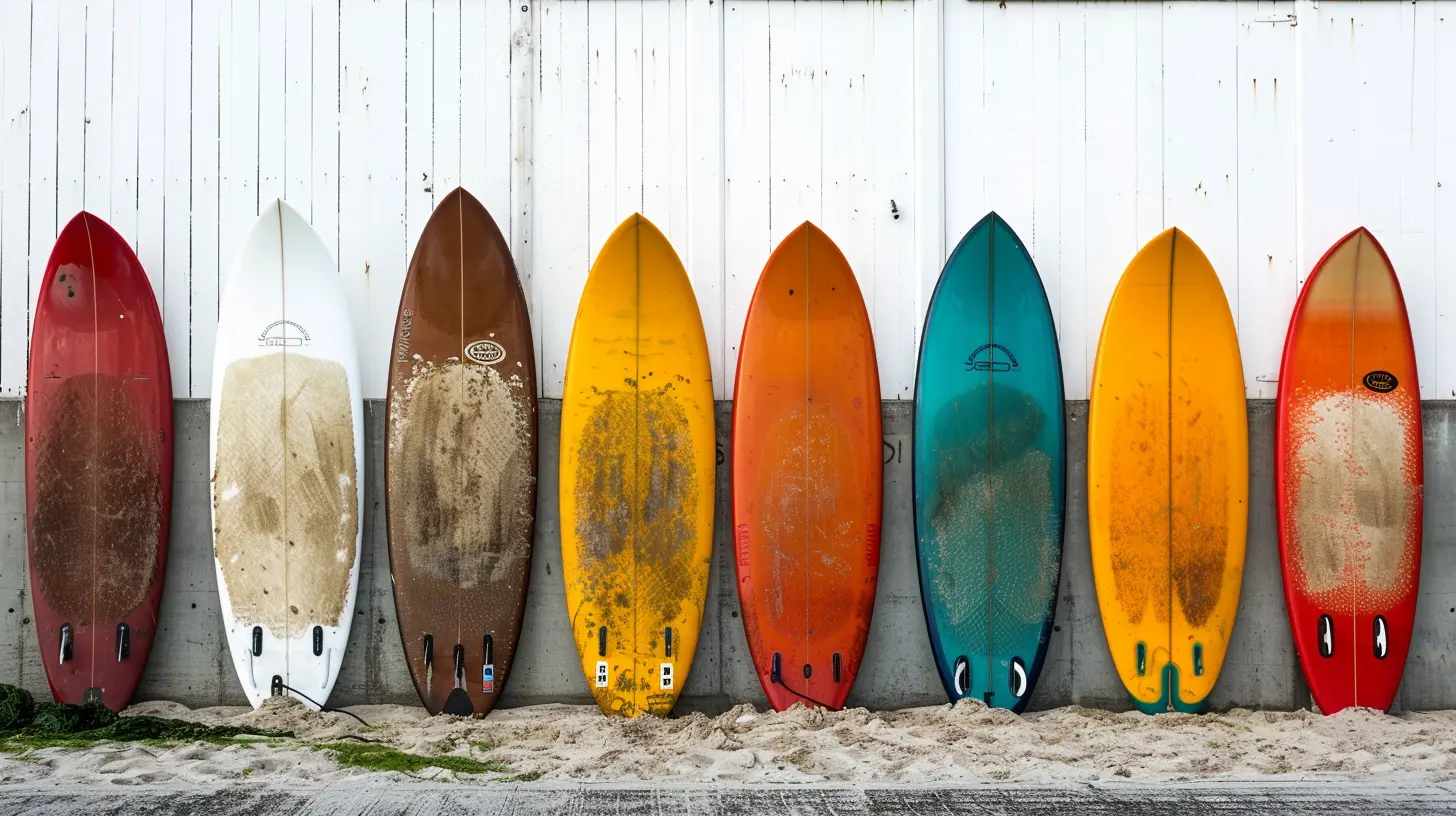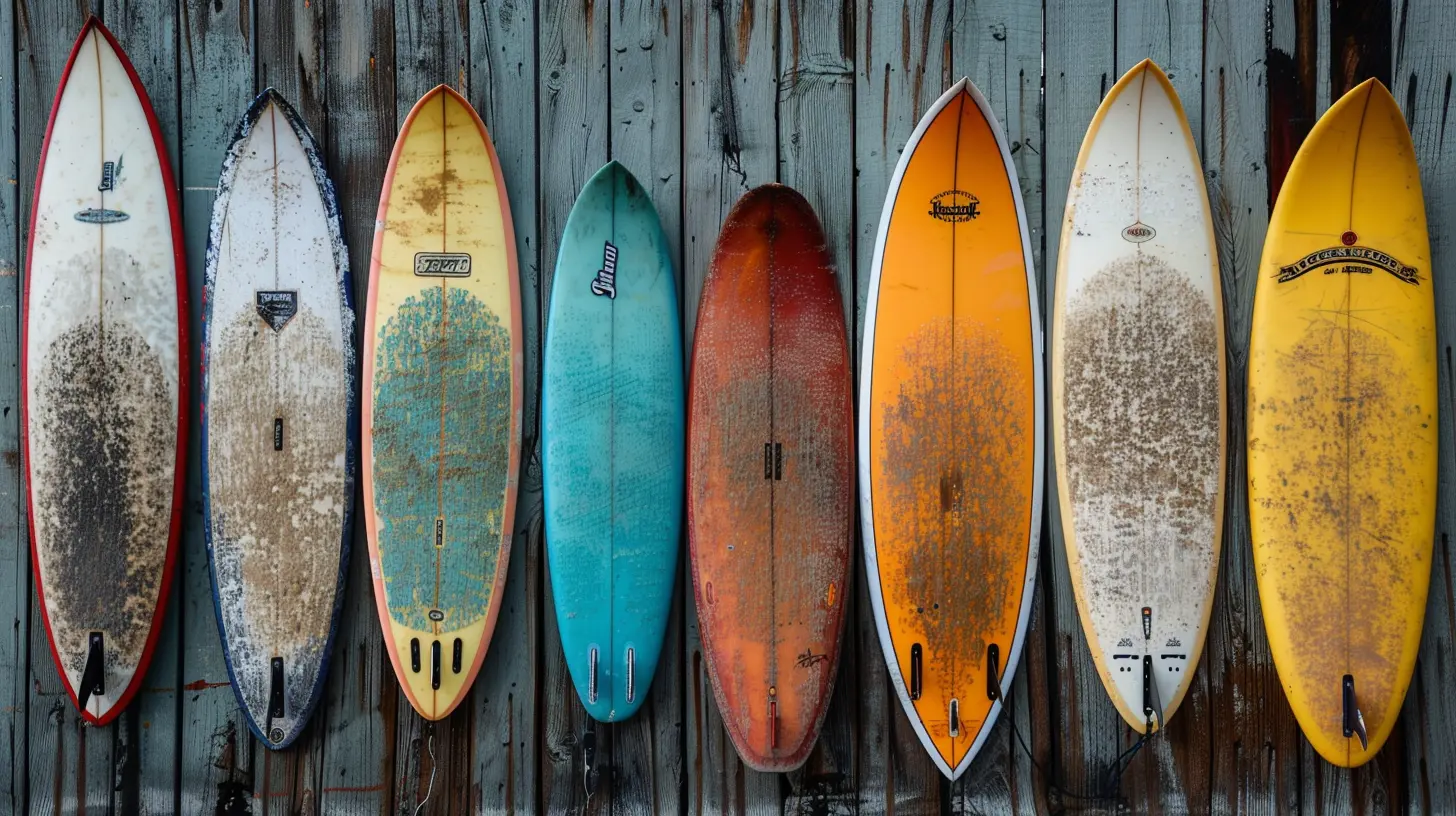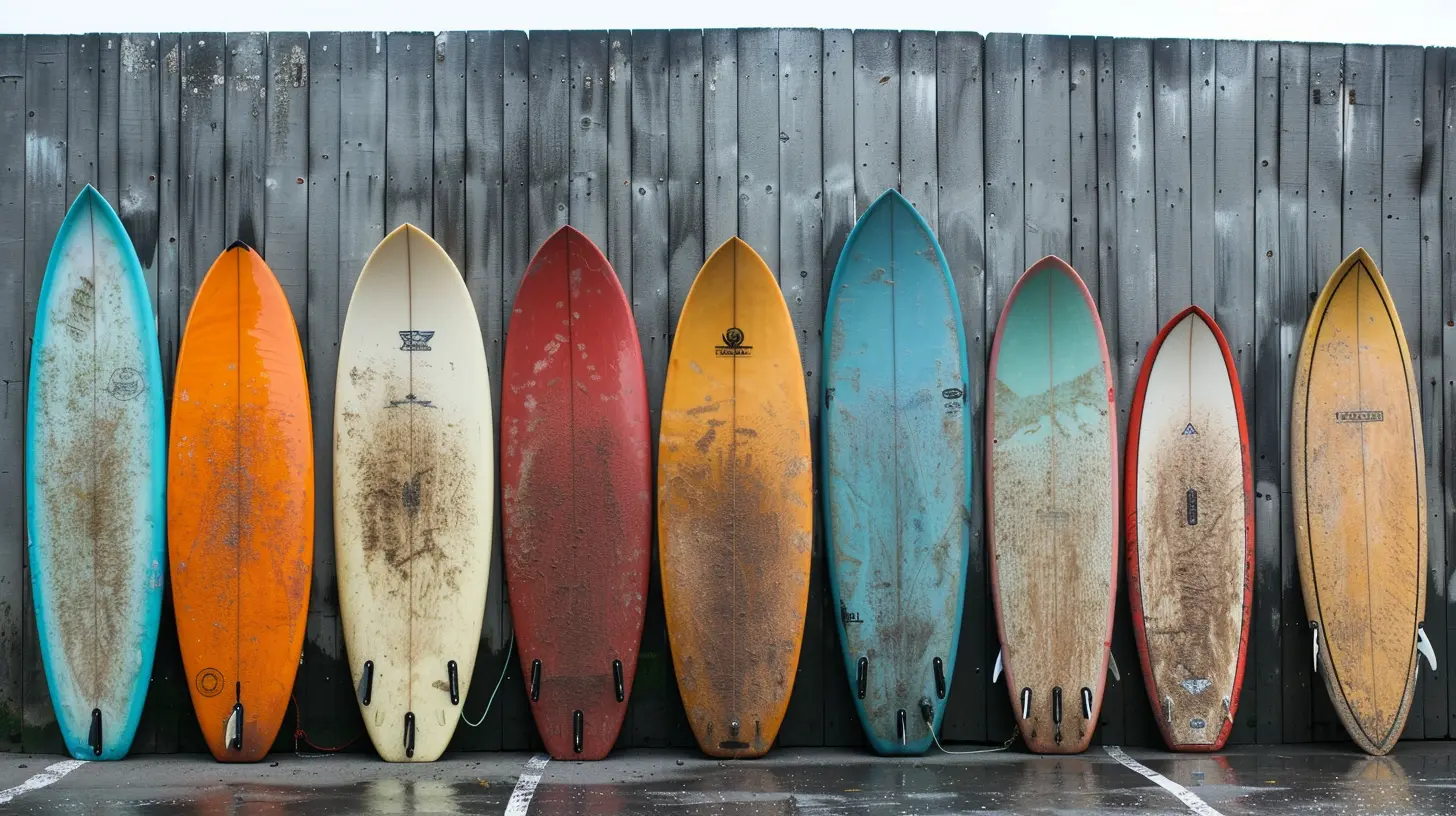How to Choose the Perfect Surfboard for Your Skill Level
26 May 2025
If you're reading this, chances are you're either getting into surfing or looking to upgrade your surfboard. And let's be honest, picking a surfboard can feel like you're trying to solve a complex puzzle. There are so many shapes, sizes, and styles that it’s easy to get overwhelmed. But don’t worry! I’m here to help you make sense of it all.
Whether you’re a total beginner or an advanced rider, finding the right surfboard is key to improving your performance and having fun out there. So, let's break it down in simple, relatable terms that anyone can understand. Ready to find your perfect board? Let’s dive in!

Understanding Surfboards: A Quick Overview
Before we jump into board recommendations, it's important to understand the basic anatomy of a surfboard. Each part of the board plays a specific role in how it performs on the water.- Length: The total height of the board from nose to tail.
- Width: How wide the board is, which affects stability.
- Thickness: The depth of the board from top to bottom, influencing buoyancy.
- Rocker: The curve of the board from nose to tail, which impacts speed and maneuverability.
- Tail Shape: This influences how the board handles turns and waves.
- Fin Setup: The number and placement of fins, affecting control and speed.
Now, with that out of the way, let’s move on to the exciting part: finding the right board for your skill level.
Choosing the Right Surfboard for Beginners
1. Go Big or Go Home: Longboards are Your Best Friend
If you’re new to surfing, your main goal is to catch as many waves as possible. And guess what? A bigger board makes that so much easier. Longboards (typically 8-11 feet) are the go-to choice for beginners because they’re incredibly stable and buoyant. Think of them as the training wheels of surfing—they help you balance and catch waves without too much effort.Why are longboards so great? Well, they have more surface area, which makes paddling easier and catching waves simpler. Plus, they’re super forgiving. If you make a mistake, the board’s stability helps you stay upright.
Key Features to Look For:
- Length: 8-9 feet for most adults.- Width: Around 22-24 inches for solid stability.
- Thickness: 2.5-3 inches for extra buoyancy.
2. Soft-Top Surfboards: The Safe Choice
If you’re worried about getting hurt, soft-top surfboards are a perfect choice. As the name suggests, these boards have a soft foam top, which means fewer bruises and bumps while you’re learning the ropes. Plus, they’re incredibly durable—perfect for those inevitable wipeouts.Soft-tops are generally longboards, so you’re still getting that stability, but with the added bonus of safety. And don’t worry, they’re not just for kids; plenty of adults use soft-tops too!
Key Features to Look For:
- Foam Deck: For extra safety.- Length: 7-9 feet.
- Rocker: A moderate rocker to help with turning and avoiding nose dives.

Surfboards for Intermediate Surfers
So, you’ve been surfing for a while, you’re catching waves consistently, and you’re looking to take your skills to the next level. Congrats! At this stage, you’ll want a board that’s more responsive and allows for greater maneuverability.1. Funboards: The All-Rounder
Funboards are the perfect transitional surfboard between a longboard and a shortboard. They’re shorter and narrower than longboards but still have enough volume to make paddling and wave-catching relatively easy. Think of funboards as the Swiss Army knives of surfboards—they’re versatile and work well in various conditions.These boards usually fall between 6-8 feet, offering a good balance of speed, control, and stability. You’ll be able to start practicing more advanced moves like cutbacks and maybe even a few small airs, depending on your level of confidence.
Key Features to Look For:
- Length: 6.5-8 feet.- Width: Around 20-22 inches.
- Tail: A rounded or squash tail for better control during turns.
- Fin setup: Tri-fin (thruster) or quad-fin for more speed and maneuverability.
2. Hybrid Surfboards: The Best of Both Worlds
If you’re looking for a board that combines the speed of a shortboard with the stability of a longboard, the hybrid surfboard is your answer. As the name suggests, it’s a blend of different surfboard styles, often featuring a wider nose from a longboard and the shorter tail of a shortboard.Hybrids are excellent for intermediate surfers who want to tackle a wider range of wave types. They perform well in both small, mushy waves and larger, more powerful surf—making them a solid choice if you’re looking for versatility.
Key Features to Look For:
- Length: 6-7 feet.- Width: 19-21 inches.
- Tail: A swallow or fish tail for extra bite in the water.
- Fin setup: Tri-fin or quad-fin for speed and control.

Surfboards for Advanced Surfers
Alright, you’ve been surfing for years. You’re shredding waves on the regular, pulling off sharp turns, and maybe even getting barreled. You’ve got the skills, and now you need the right board to match them. At this level, it’s all about performance.1. Shortboards: Speed and Maneuverability
The shortboard is the go-to board for high-performance surfing. These boards are typically 5.5-6.5 feet in length and are designed for speed, sharp turns, and aerial maneuvers. If you’ve got the skills, a shortboard offers the most control in critical sections of the wave.However, keep in mind that shortboards are tough to paddle and require you to have strong paddling power. They’re also less forgiving, so you’ll need to be confident in your abilities to ride one.
Key Features to Look For:
- Length: 5.5-6.5 feet.- Width: Around 18-19 inches.
- Tail: Squash, round, or pin tail for precise control.
- Rocker: High rocker for better performance in steep waves.
- Fin Setup: Tri-fin (thruster) or quad-fin for maximum speed and control.
2. Fish Surfboards: Fun in Small Waves
If you’re an advanced surfer but looking for a board to have fun in smaller, less powerful waves, a fish surfboard is a great option. Fish boards are shorter and wider than traditional shortboards, with a swallow tail that gives them extra speed in weaker waves. They’re not built for big, barreling surf, but they’re a blast in smaller conditions.Fish boards are perfect for days when the waves are mushy but you still want to get out there and have fun. They’re fast, playful, and ideal for making the most out of less-than-ideal conditions.
Key Features to Look For:
- Length: 5.5-6.5 feet.- Width: 20-22 inches.
- Tail: Swallow tail for extra bite in smaller waves.
- Fin Setup: Twin-fin or quad-fin for speed and looseness.
Other Factors to Consider
1. Your Weight and Height
Your body size plays a huge role in choosing the right surfboard. Generally, larger surfers should opt for bigger boards with more volume, while smaller surfers can go for shorter boards. Volume is measured in liters, and it’s a good indicator of how much float a board has. More volume = more buoyancy = easier paddling.2. The Waves You’ll Be Surfing
If you’re always surfing in smaller, mushy waves, then a longboard or fish surfboard might be your best bet. But if you’re regularly tackling bigger, more powerful waves, then you’ll want something high-performance, like a shortboard or a hybrid.3. Your Fitness Level
Let’s be real: surfing is a workout. If your paddling strength isn’t quite there yet, opt for a board with more volume that helps you catch waves easier. On the other hand, if you’re in great shape and have solid paddling skills, feel free to go for a more challenging board.Final Thoughts
Choosing the perfect surfboard isn’t rocket science, but it does take a bit of thought and consideration. The key is matching your board to your skill level and the conditions you’ll be surfing in. Beginners should focus on stability and ease of use, while intermediate and advanced surfers can prioritize performance and responsiveness.So, whether you're just starting out or looking to upgrade, take your time, do your research, and most importantly—get out there and enjoy the waves!
all images in this post were generated using AI tools
Category:
SurfingAuthor:

Onyx Frye
Discussion
rate this article
3 comments
Xena Curry
Great article! Choosing the right surfboard can really make a difference, especially for beginners. I appreciate the clear tips on matching boards to skill levels. It’s refreshing to see advice that emphasizes personal growth in surfing. I’m looking forward to applying these insights to my own board selection!
June 3, 2025 at 12:28 PM

Onyx Frye
Thank you so much for your kind words! I’m glad you found the tips helpful and inspiring. Happy surfing and best of luck with your board selection!
Desiree Sweeney
Navigating the world of surfboards can be overwhelming, but remember that every surfer's journey is unique. Trust your instincts, seek guidance, and choose a board that feels right for you. Happy surfing!
May 31, 2025 at 2:26 AM

Onyx Frye
Thank you for your insightful comment! Trusting your instincts is key to finding the perfect board. Happy surfing indeed!
Zinn McQuade
Ride the waves, not the struggle bus!
May 28, 2025 at 3:22 AM

Onyx Frye
Absolutely! Embrace the waves and let your skills shine with the right board! 🏄♂️✨



